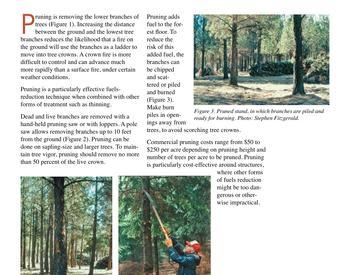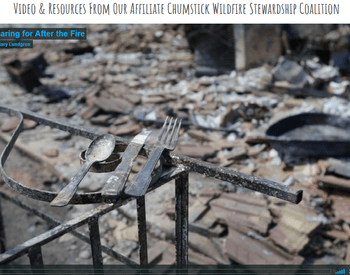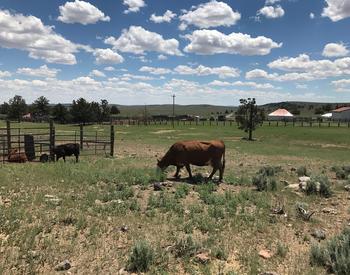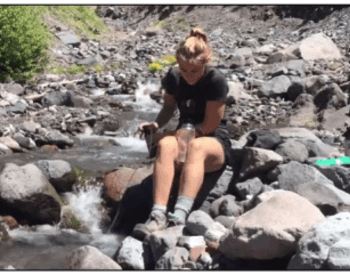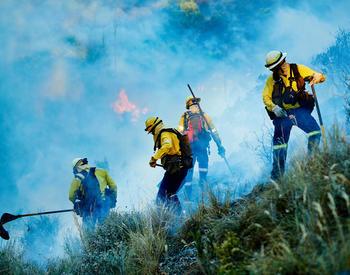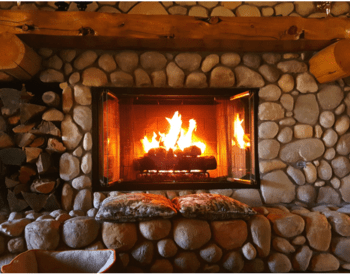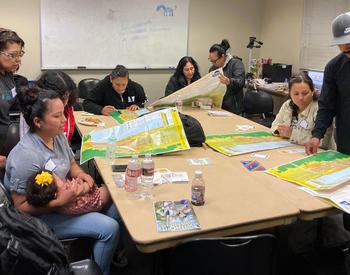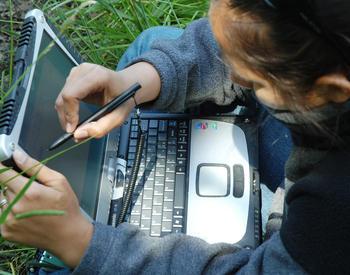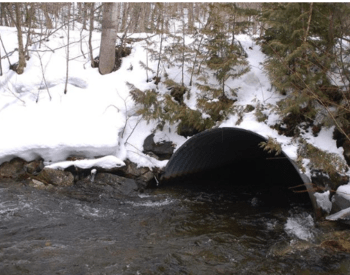GLIDE, Ore. – A photo shows deep brush under towering trees, so thick it’s impossible to see through. A month later, the same spot is unrecognizable after clearing and other fire-prevention measures.
About 25 residents from the Watson Mountain area outside Roseburg gathered to see the striking contrast and to hear a presentation about firewise communities led by Alicia Christiansen, an Oregon State University Extension Service forester and professor of practice in the College of Forestry. She was joined by Kyle Reed of the Office of the State Fire Marshal and Jessica Duarte, Douglas Forest Protective Association assistant unit forester.
The workshop was held in the field to illustrate how two residents prepared their homes and surrounding area to have a better chance of withstanding wildfire and to urge residents to organize a Firewise USA community. Christiansen, who started a Firewise USA community in her neighborhood, said the program brings rural homeowners and those who live in the wildland-urban interface together to reduce the risk of wildfire.
“It’s extremely important that neighbors work collaboratively with each other – and talk with each other – to reduce their shared risk,” Reed said.
Firewise USA, a program of the National Fire Prevention Association, encourages a defensible space approach to protecting property. Land is separated into three zones: the immediate zone, which is within 5 feet of the house and outbuildings; the intermediate zone, which extends 5-30 feet from structures; and the extended zone of 30-100 feet. Each zone is treated differently, Christiansen said. Since zones often overlap with neighbors’ adjacent property, it makes working together essential.
In the immediate zone, the recommendation is to be “lean, clean and green” by planting fire-resistant plants and keeping them trimmed away from structures; pruning trees to at least 10 feet up; removing dead plant material like leaves, needles and twigs; and keeping grass watered and mown.
It’s also advised to mulch with gravel or rock and build hard surfaces like patios and flagstone paths around the home as an alternative to plants. Using well-watered container plants offers color and are unlikely to contribute to fire. Wildfire embers, which can float through the air up to a mile, can be kept from igniting on the house by keeping gutters and roofs clean.
In the intermediate zone, it’s all about where plants grow densely, such as trees and brush, Reed said. Annual maintenance should include mowing grass, removing dead vegetation and invasive weeds and keeping trees limbed up and shrubs away from trees.
Beyond the intermediate zone, the approach is similar but leaving some brush patches and downed trees for habitat and soil benefits is acceptable. The Extension publication Keeping Your Home and Property Safe from Wildfire features 35 pages of color photos and information, including more on zones as well as lists of fire-resistant plants and how to deal with invasive weeds.
Nancy and Jerianne Haag, sisters who own 70 acres in the area, were onboard with participating in a Firewise USA community.
“This is all new to us,” Jerianne Haag said. “We’ve learned so much and will put it to good use. Hopefully, the neighborhood will work together. Obviously, we can get more done if we do.”
Firewise USA communities have access to free help with creating defensible space from the Douglas Forest Protective Association. Most counties work with the Oregon Department of Forestry. After organizing a board, making a risk assessment and action plan and hosting an outreach event, neighbors apply at Firewise USA to get certified, according to Reed.
Christiansen said people should do what they can so they don’t get overwhelmed. Sometimes it pays to take it slow.
“There are a lot of little things you can do – you don’t have to be a forester or fire expert, Christiansen said. “A little information and training and strategies will make it easier.”
Organizing a Firewise USA community can be tough, Christiansen said. Some neighbors are more cooperative than others and there’s a burnout factor.
“The main resistance is that even though you don’t have to be an expert, you do need to have that sparkplug,” Christiansen said. “You need to have a sparkplug in the community who is the person who is dedicated to see the process through. It can take time; it’s not an overnight process. That’s where people start to fall off.”
Workshop participants and Douglas County residents Mike and Jennifer Jackson paid particular attention to information about clearing brush in the wilder areas of their property and also keyed in on the zone system of defensible space, which they plan to implement in stages.
“We came because we’re concerned about wildfire,” Mike Jackson said. “The Archie Creek fire (in 2020) brought home how vulnerable we are. Trees and underbrush on our land could easily go up in flames. We want to try to prevent that.”
Christiansen said the response was heartening. She hopes to see Firewise USA communities form throughout the region.
“The biggest takeaway is that you’re not alone,” Christiansen said. “It’s great when one landowner does the practices to make their space more fire resistant, but it’s more impactful when it’s done at the community level.”

